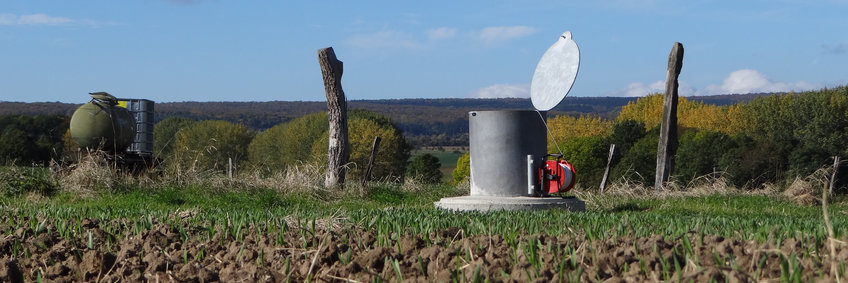
Aqua Diva
The Collaborative Research Centre 1076 AquaDiva (CRC AquaDiva) focuses on the important roles of water (Aqua) and biodiversity (Diva) for shaping the structure, properties, and functions of Earth's Critical Zone that extends from the vegetation through the soil and down into the first aquifers.
The Earth's Critical Zone is the thin, living, and permeable layer that connects the atmosphere with the geosphere, and provides the living environment for most terrestrial biota. Humans live in the Critical Zone, and benefit from the vital services it provides, including clean water resources. Pollution, land-use, and climate change increasingly alter the surface compartments of the Critical Zone. But we have not yet explored this part of the earth enough to fully understand the consequences for the subsurface.
Collaborative Research Centre 1076 AquaDiva
The principle aim of the CRC AquaDiva is to increase our understanding of the links between surfaces and subsurface, especially how organisms inhabiting the subsurface Critical Zone reflect and influence their physical, ecological, and geochemical environment, and affect water and matter transiting the Critical Zone. To achieve this, we have constructed a novel infrastructure platform, the Hainich Critical Zone Exploratory, to study how water and gas fluxes link surface vegetation and soils under different land management to aquifer complexes.
The CRC AquaDiva is led by the Friedrich Schiller University (FSU) Jena, in collaboration with the MPI-BGC, the Helmholtz Centre for Environmental Research - UFZ, and the Leibniz Institute of Photonic Technology (IPHT).
Our department is involved in three different AquaDiva Projects. Gerd Gleixner and Alice Orme study the molecular nature of dissolved organic matter and how this reflects the metabolism and cycling of subsurface organisms (project A02). Susan Trumbore and Thorsten Frosch (FSU/IPHT) use Raman and other gas sensing techniques to study gases in the critical Zone (project B03). Valerie Schwab (project B03) and Beatrix Heinze (project A03) use compound specific isotope measurements to trace carbon flow between organic and inorganic forms, especially focusing on the use of fossil organic matter in groundwater communities. Simon Schroeter moved from A02 to be a new postdoc funded to help synthesize information about the cycling of elements across the multiple disciplines represented in the Collaborative Research Center (project D03).
Team at MPI-BGC
- +49 3641 57-6110
- +49 3641 57-6172
- +49 3641 57-6147
- +49 3641 57-6130
- +49 3641 57-6169
